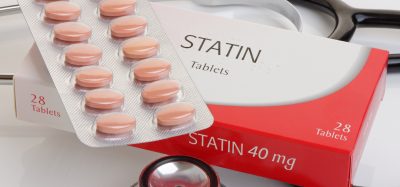How to make asthma drugs last longer
Posted: 20 December 2022 | Izzy Wood (Drug Target Review) | No comments yet
US researchers uncover how to make asthma and COPD medication more potent, which could also improve how long they work in patients who need frequent doses.


Researchers around the world have been looking for ways to improve the drugs delivered by inhalers for asthma, to make them more potent and longer acting, with little success to date. A new study from Thomas Jefferson University, US, identified a new compound that can be added to an existing drug that could bridge the gap.
For many, inhalers are a sort of miracle drug. Yet, what few people realize is that these life-saving medicines can actually stop working in the long term, especially in people who use them often and in high doses.
“This specific type of drug discovery approach has been aggressively pursued for years by both academia and industry; nothing discovered to date shows the properties that Dr Deepak Deshpande’s compound exhibits,” said Dr Raymond Penn, director of Jefferson’s Centre for Translational Medicine and co-author on the study.
The researchers, published in PNAS, discovered a molecule that can increase the potency of one of the main ingredients in asthma inhalers: beta agonist, whose purpose is to relax airway smooth muscle and open up contracted airways.
“When we make a drug more potent, we need less of it to control symptoms,” explained lead author Deshpande. “Less drug also means that a person is less likely to accumulate the side effects that make the drug stop working. We are very excited by these results and how they might improve asthma medication.”
The researchers have a pretty good idea of why these drugs stop working. Normally, the beta agonist lands onto a receptor on the surface of muscle cells. That catch triggers a series of biochemical reactions in the cell, that ultimately relax the muscle tension of the airways. Once the drug is caught by the receptor, the receptor tends to stop working, and over time can even degrade.
That isn’t a problem when the drug is used occasionally. However, for people who use this type of inhaler frequently, the cell does not have enough time to produce new receptors in between inhaler puffs.
The team searched for a way to change how the beta-agonist is caught by its receptor. They developed a second compound that only works after the beta-agonist lands onto its receptor. This second compound stabilizes the receptor conformation.
Drug discovery for COPD treatments
The researchers were able to show that when their compound was delivered in mice along with the beta-agonist, the strength of the drug improved 60 to 70 percent, without a similar increase in receptor degradation.
“In theory, this means our compound could improve the therapeutic effect of beta agonists, but we have more tests to run in order to understand the extent to which this approach improves a beta agonist’s longevity. But our results give a very strong impression that it does,” concluded Deshpande.
Developing an add-on compound rather than an entirely new kind of anti-constriction medicine takes advantage of the fact that beta agonists have been used for years and tend to be safe and effective for most people. If future tests and clinical trials confirm what this research suggests, this new add-on drug could be available to patients much sooner than a traditional new drug.
Related topics
Drug Development, Drug Discovery, Drug Discovery Processes, Targets, Therapeutics
Related organisations
Jefferson’s Centre for Translational Medicine, Thomas Jefferson University
Related people
Dr Deepak Deshpande, Dr Raymond Penn








